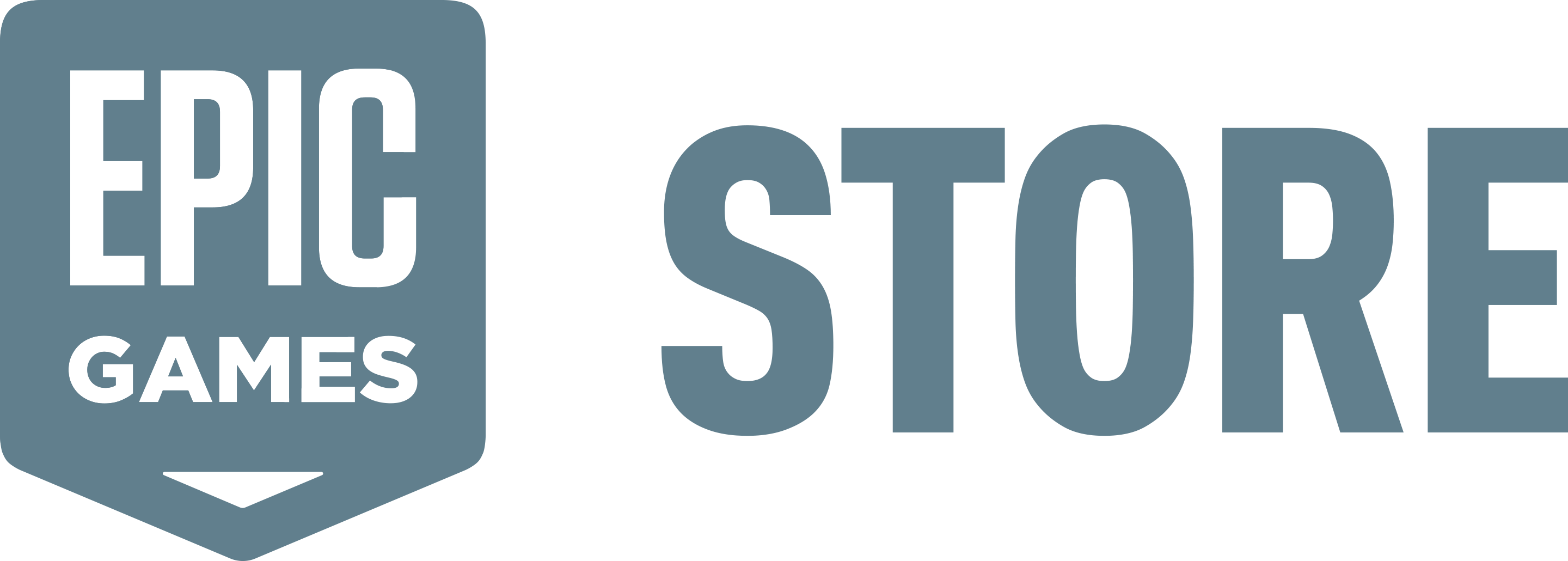It’s been a little while, right? December was a short work month so we didn’t provide an update, but whoa, 2024 has certainly already been very intense! The development for Still Wakes the Deep is reaching its busiest point, last items added, bugs are being found, and taken care of! Oof, it’s this fascinating stage where you finally see the game in its marvellous entirety, but also, you know when you read the same text too many times, you begin questioning every letter, ha! Tonnes of great content here by our Dev team, giving awesome insight as to where we’re at. Enjoy!
Art / Animation / Lighting
→ Research / Moodboards
The Art team is incredibly busy with the latter stretches of game development so we asked Environment Artist Gabriela Woch (who is now working on another project in our studio) to tell about how she helped with the research for the environments we see in the game, that were collated at the beginning. Gabi’s extensive mood boards and meticulous notes helped to bring about to much of the game’s eventual atmosphere! Here is her text on her process:
The purpose
Before we even started, we knew that we wanted to make the characters and the story as grounded as possible. And given the event was planned to take place in the 1970s in the North Sea, we realised that we needed to do the research.
How come it’s me doing it?
This was a team effort with almost everyone taking part in the research. However, given that I have a degree in Costume, where most of my role as a costume designer was to investigate the fashion for the time period of any script I was given, this task fell nicely into my skill set; so I undertook most of the research for Still Wakes the Deep.
The fun
The most fun and interesting part of my job was watching many video archives. Not only did they provide exactly what we needed in terms of aesthetics for the rig, but also how people interacted on their steel island, particularly about how they communicated and worked with heavy machinery. These insights gave us many ideas for the design of the game as well as creating an atmosphere that looks and feels real.
The hardest part
The tricky part of the research was making sure the assets we were finding were not American as they tend to pop up more in the media than British versions. The other challenge was that if I was looking for an object that I couldn’t find a reference for in time, I would have to improvise by sourcing references from either genuine photos of that era or watching Scottish and English documentaries, television shows, and films. Even so, we still occasionally needed to change some of the props during production when we realised those objects didn’t actually exist during the ’60s and ’70s.
If I have to pick and choose my favourite Mood boards, the first one will have to be the first research I ever conducted, as it cemented my role as the Researcher for the project.

My other favourite findings were the ones with the most random things that ended up on an oil rig at the time. Seeing how the workers lived their lives on the rig and what they did in their downtime. It just makes everything more real and grounded at the same time.


Audio
→ Dear Diary,
Another day, another round of aligning hand touches and footsteps to animations. It’s become as routine as brushing my teeth in the morning. Ah, the glamorous life of a game Audio Designer!
Many people seem to think being an Audio Designer means creating ‘boing boing’ sounds all day long. And to be honest sometimes, whilst waiting for a level to open at a speed that aligns with my level of patience, I catch myself secretly wishing that my job really did revolve around perfecting the art of ‘boing boing’.
Despite the lack of creative sparks in these final stretches, I also reflect on the progress we’ve made with the game’s audio. It fills me with a sense of accomplishment and that extra bit of motivation. Who knew that crafting background noises for phone conversations could be so oddly satisfying?
As I power through these stages, I’ll hold onto that spark of motivation and keep my eyes on the prize.
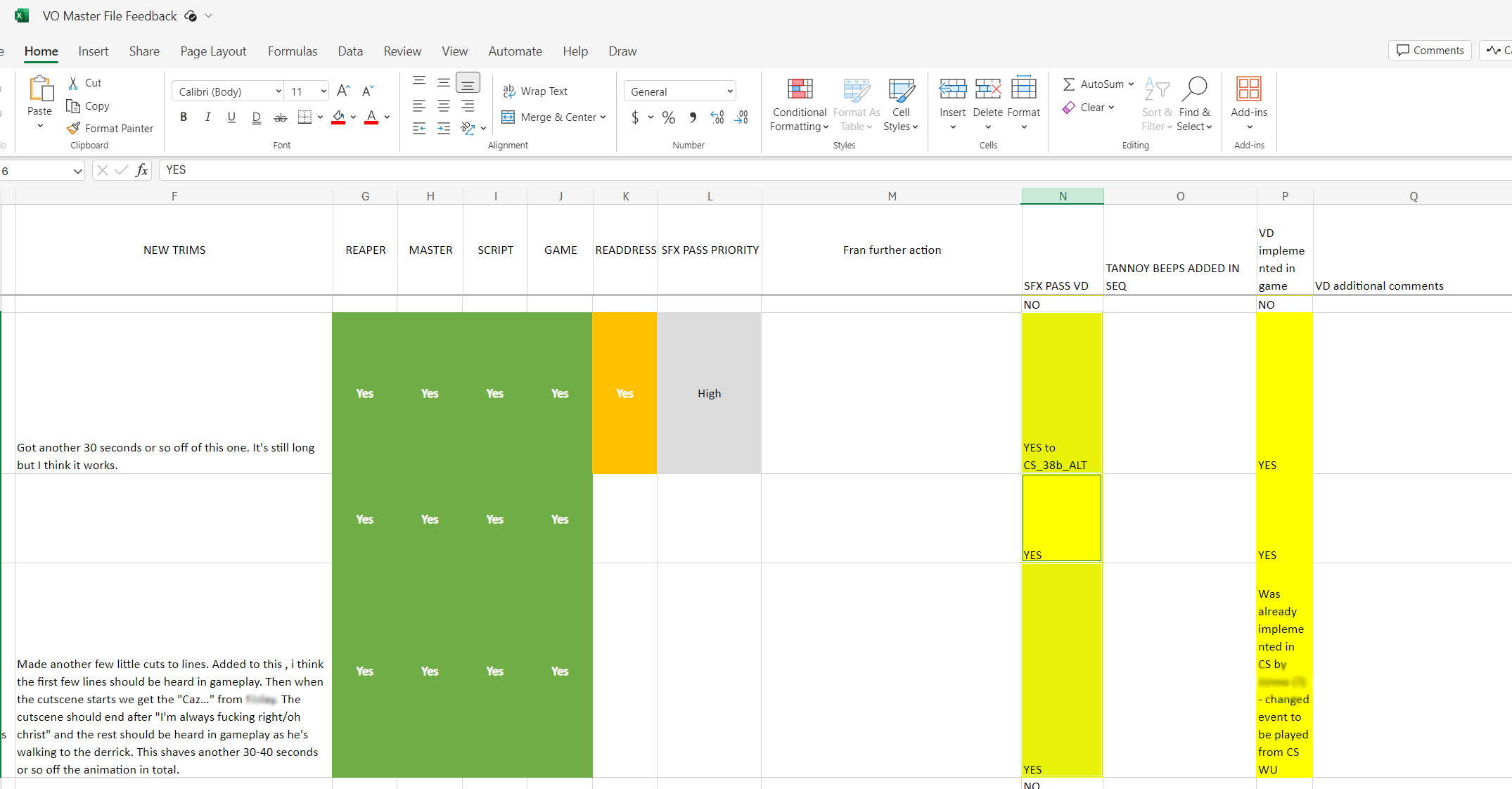
Until next time, dear diary,
Code / Programming
→ Coding Interactions
While exploring the oil rig in Still Wakes the Deep, we want the players to feel as if they’re operating the machinery of this industrial superstructure. As a gameplay programmer, I work with the designers to make interactions with the world as intuitive and immersive as possible. Part of that is making the UI feel clear and responsive – so that the player can work out what to do easily. Choosing input that mimics the actions of operating a machine helps to immerse the player more. For example, gripping a gamepad trigger to grip a handrail, or pulling down on a joystick to pull a lever.
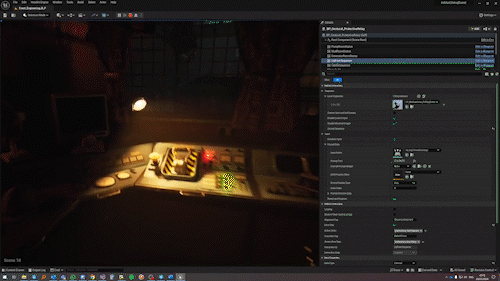
Getting the interactions to feel fun and intuitive is a tricky process that requires lots of iteration – the interaction systems in this game have been changing throughout the entire development. To make this easier to develop, I’ve engineered the interactions to be data-driven and modular. Changing the input for an action or rearranging the sequence of events needed can be done without having to rewrite and compile code. The steps of the interaction can be built up to form a complex sequence involving UI prompts, input responses, animation, and sound. Moreover, the interactions are tied into the scripting system so that can affect the state of the game world when used.
Interacting with the world in Still Wakes the Deep should feel satisfying and help immerse the player as they explore the oil rig.
– Adam Meredith, Senior Programmer
Community / Comms
→ The jig is up
We can’t wait for players all over the world to get to explore our Beira D. A sparkle of an idea by our Lead Creative Director Dan Pinchbeck, “The Thing on an Oil Rig”, nurtured by his writing, brought to life by our incredible team, all their talents showing through. It’s one hell of a pitch, and now it’s time for us to show we did it justice. But it all got me thinking…
Recently I watched and was utterly transfixed by The Curse – a series crafted by Nathan Fielder and Benny Safdie – I really adored its ambitious, uncompromising artistic decisions. But some call it the last of the prestige television. Projects like that – just pure forms of artistic expression, they just don’t get funded anymore apparently.
What was started with Twin Peaks and Sopranos, people say, is about to grind to a halt. Similar conversations are happening in games – indies are not getting as much new funding and the AAA space is often filled with franchise releases. The space for a game like ours – original, narrative-driven experiences which are focused and don’t outstay their welcome – is perhaps tough to find. So that pressure is on.
It may sound grandiose, but seriously I feel like this game carries a responsibility to prove that these kind of passion projects can be viable in the market, that there is an audience for them, that the global player base is mature enough to embrace such projects. We’ll face the music and find out soon enough – our excitement and nerves are building in equal measure – but the popularity of this game could hopefully help show a path forward for other similar projects. Our own future titles included! For me, Still Wakes the Deep is A Movement. ;D Self-congratulatory, much? Ah, maybe, but I’ll always stand for art out there that is different, offers unexpected meanings, and challenging emotional encounters. Still Wakes the Deep gives all that in spades!
– Marijam Didžgalvytė, Senior Marketing Executive
What was started with Twin Peaks and Sopranos, people say, is about to grind to a halt. Similar conversations are happening in games – indies are not getting as much new funding and the AAA space is often filled with franchise releases. The space for a game like ours – original, narrative-driven experiences which are focused and don’t outstay their welcome – is perhaps tough to find. So that pressure is on.
It may sound grandiose, but seriously I feel like this game carries a responsibility to prove that these kind of passion projects can be viable in the market, that there is an audience for them, that the global player base is mature enough to embrace such projects. We’ll face the music and find out soon enough – our excitement and nerves are building in equal measure – but the popularity of this game could hopefully help show a path forward for other similar projects. Our own future titles included! For me, Still Wakes the Deep is A Movement. ;D Self-congratulatory, much? Ah, maybe, but I’ll always stand for art out there that is different, offers unexpected meanings, and challenging emotional encounters. Still Wakes the Deep gives all that in spades!
Design
→ Close enough
During the production of any game there is an inflection point. Your thoughts drastically shift from the creative endeavour, the journey the team is making to create the game, to the goal of turning the game into a releasable, stable, coherent object.
This goal often ends up being very urgent and requires many decisions and trade-offs about the time remaining and what the team perceive to be the most important things to fix before release. There are so many things you think… we really cannot ship that! But what you might notice is something that a player would never perceive – and instead there’s something that the player would notice, which is hugely more important.
The main force for good is that during this time the team is at the peak of its knowledge about how the game and its systems should work, so great progress can be made in a very short time.
In addition, things that didn’t really make sense in the game before either start working suddenly, because their supporting features are added – or stick out so much that they are easy candidates for surgical removal.
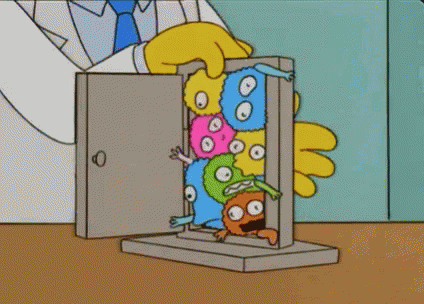
But steadily the issues do get fixed, the bug list does shrink, the tasks disappear.
However it’s undeniable that there are sometimes hard decisions to be made. There’s a finite amount of time, a finite amount of work that can be done in that time, and a whole horde of requests and bugs that are fighting for inclusion and priority.
In addition to our bug database we have Miro boards with global and per scene issues which need triage and agreement for what the fix for the issue should be. It’s about what we should do versus what we can do. What’s the best fix, and what’s the best fix?
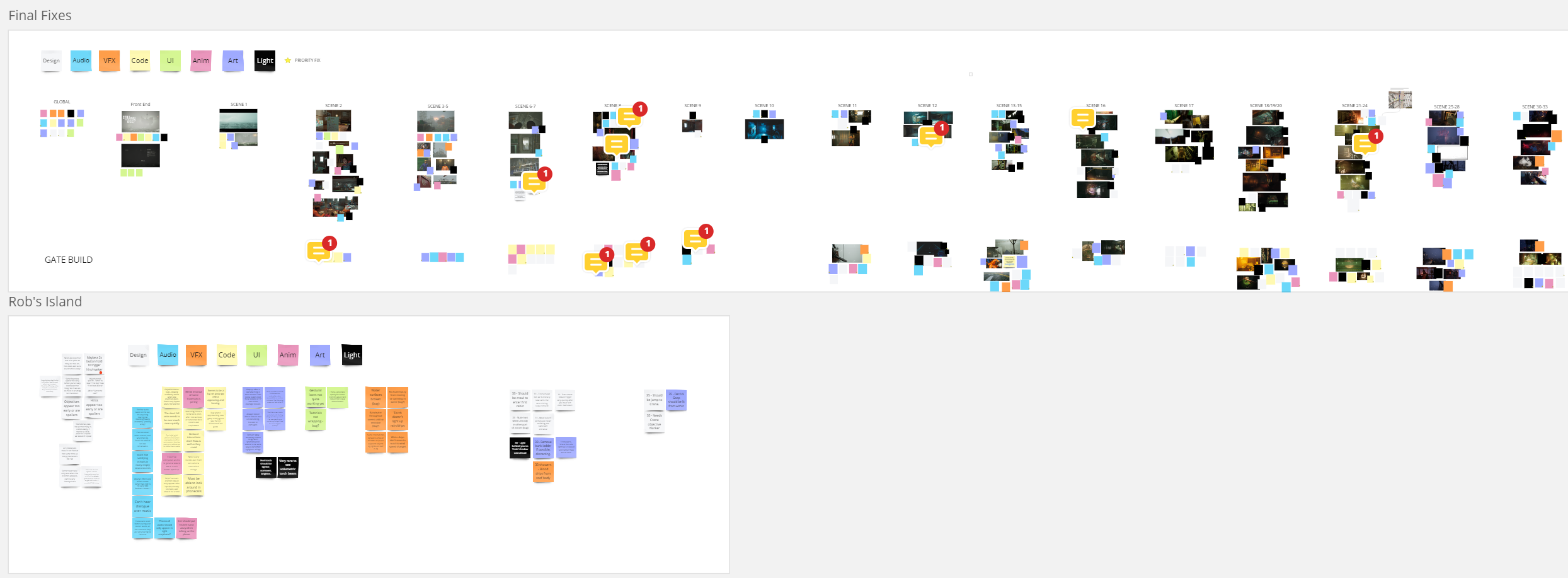
(Just some of the issues fighting for ascension into a task or bug)
It’s sometimes painful to let go of a creative project, how to decide when it’s done. It has taken over your creative life, all your decisions seem to be about cutscenes, or script lines, or what follows what and how.
Somewhere under what you’ll play, visible perhaps by X-Ray examination, are all the previous versions of Still Wakes the Deep; a palimpsest of ghostly images… where everything we tried before has been superseded by a new final image: set, varnished and framed.
– Rob McLachlan, Lead Designer
QA
→ QA as a Fan
Recently I (Leon) jumped onto Still Wakes the Deep to support the team in QA as we march forward towards launch! Despite being with the company for nearly a year and a half I had, rather notoriously, avoided watching / playing anything for Deep as I’m a big TCR fan and greedily wanted just one more game as a player! (I’m sorry Design team!)
However, this also put me in a rare internal position of being able to offer reasonably fresh eyes and unbiased feedback to the team. As a result, my first few days were spent playing the game (wow it did not disappoint!) and then discussing my experience with the team and creating a small feedback report of sorts.
It’s a tricky balance in game development keeping an objective eye on something you spend years looking at day in and day out, so getting an unspoiled perspective is a rare and valuable thing. I’m hoping the feedback/player experience takeaways I had to offer help in some small way to signpost those gleaming areas of success and file down the rough edges to help make the best game The Chinese Room can.
– Leon Holmes, QA Tester



